Currently plying his trade in Portuguese football with Moreirense, Guinean midfielder Ibrahima Camará has been impressive, attracting the interest of clubs from around Europe as a result. Camará had been heavily linked with a move to France, with both Stade Brestois and RC Lens interested in his signature. However, it looks like Camará will instead be moving to Belgium, with it being rumoured that current Belgian champions Club Brugge will pay around €3.5 million to secure the services of the senior Guinean international midfielder. This tactical analysis and scout report will take a look at some of the strengths in Camará’s game; as well as how he may fit into the Club Brugge squad.
Position overview
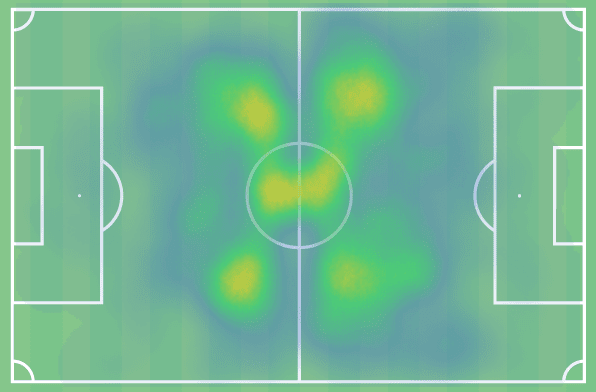
At Moreirense, Camará normally plays as the right central midfielder in a 4-4-2/4-1-4-1 formation deployed by manager Ricardo Sá Pinto. However, as his heat map from this season shows, he likes to roam around central midfield, looking to find pockets of space to receive the ball in to demonstrate his excellent range of passing. If the rumoured transfer to Club Brugge this summer goes through, it will be intriguing to see how whoever is in charge there next season utilises the skills that Camará brings to the table, a skillset that will be looked at in more detail now.
Excellent range of passing
This first section will take a look at Camará’s excellent range of passing, with this skill being the biggest strength in Camará’s game. Camará is the best passer of the ball in Moreirense’s midfield, with the majority of their attacking movements originating through him. He ranks 1st out of their midfielders in the following categories: passes per 90 (33.21, 78.1% success rate), long passes per 90 (4.15, 55.1% success rate), and passes to the final third per 90 (6.69, 62.6% success rate). Camará’s long passing ability is particularly strong, with the Guinean able to bypass opposition defences with balls over the top into runners, and line breaking switch of play passes. Following are some examples of Camará’s range of passing.
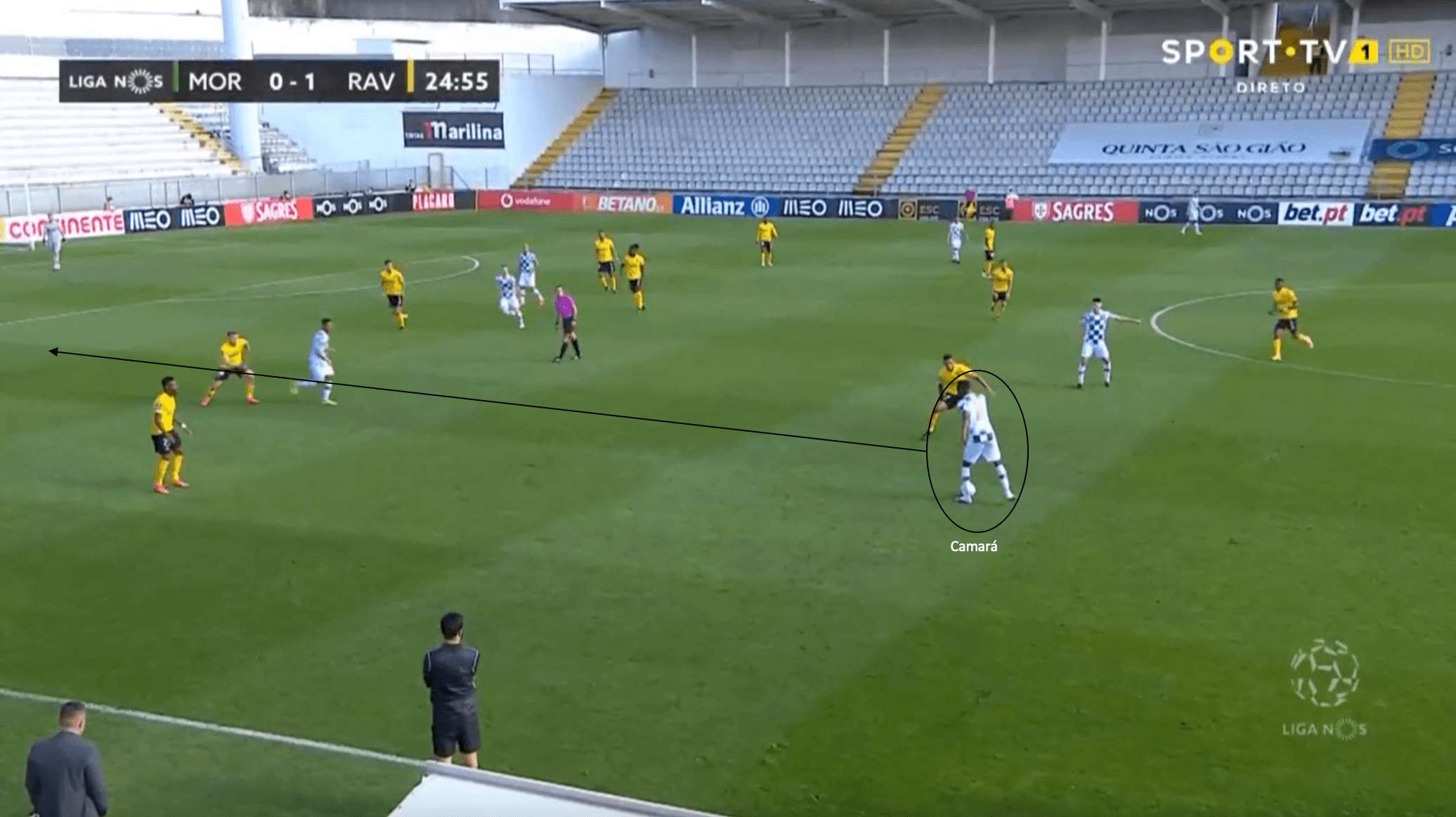
The image above shows an example of this range of passing displayed by Camará. He is played the ball in a deeper position and is looking for options to pass to. The winger in front of him drops into a deeper position to show as an option, which drags the defender narrow with him. This allows Camará the opening to play a pass through the lines into the fullback who is making a run in behind the opposition defence. As a result, the perfectly weighted pass is played into the fullback’s path by Camará, who ends up winning a corner for Moreirense.
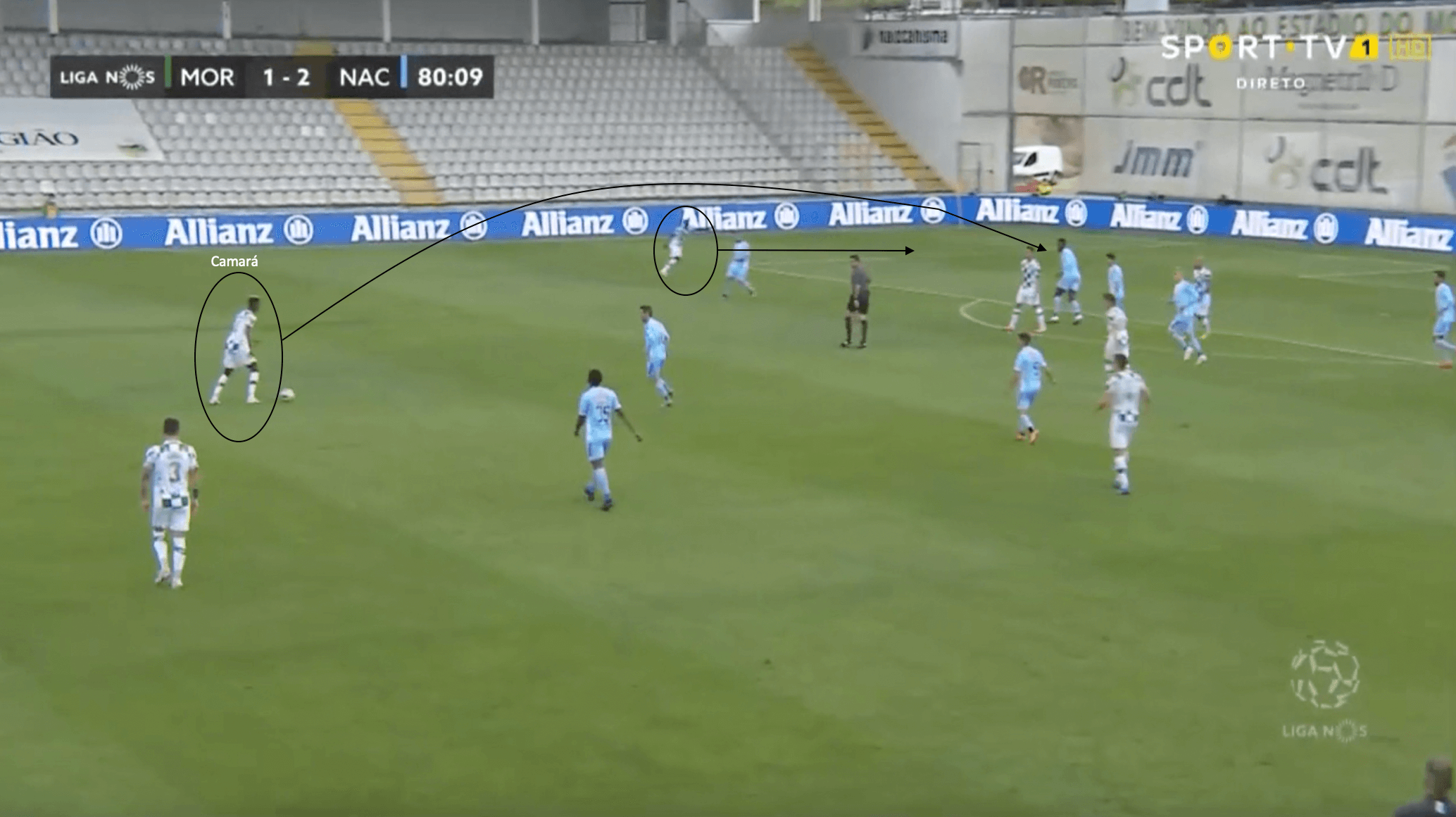
As mentioned earlier, the long passing ability of Camará is what stands out the most from him. The image above shows an example of this. In this attacking phase of play for Moreirense, Camará is operating in a deeper position, looking for forward runners to pass to. He notices the fullback pointing to where he is going to make his run, and plays a perfectly weighted ball over the top of the opposition defence and into the fullback’s path. As a result, the fullback is able to play a cut back across the face of goal, where a teammate is able to fire home for a goal for Moreirense.
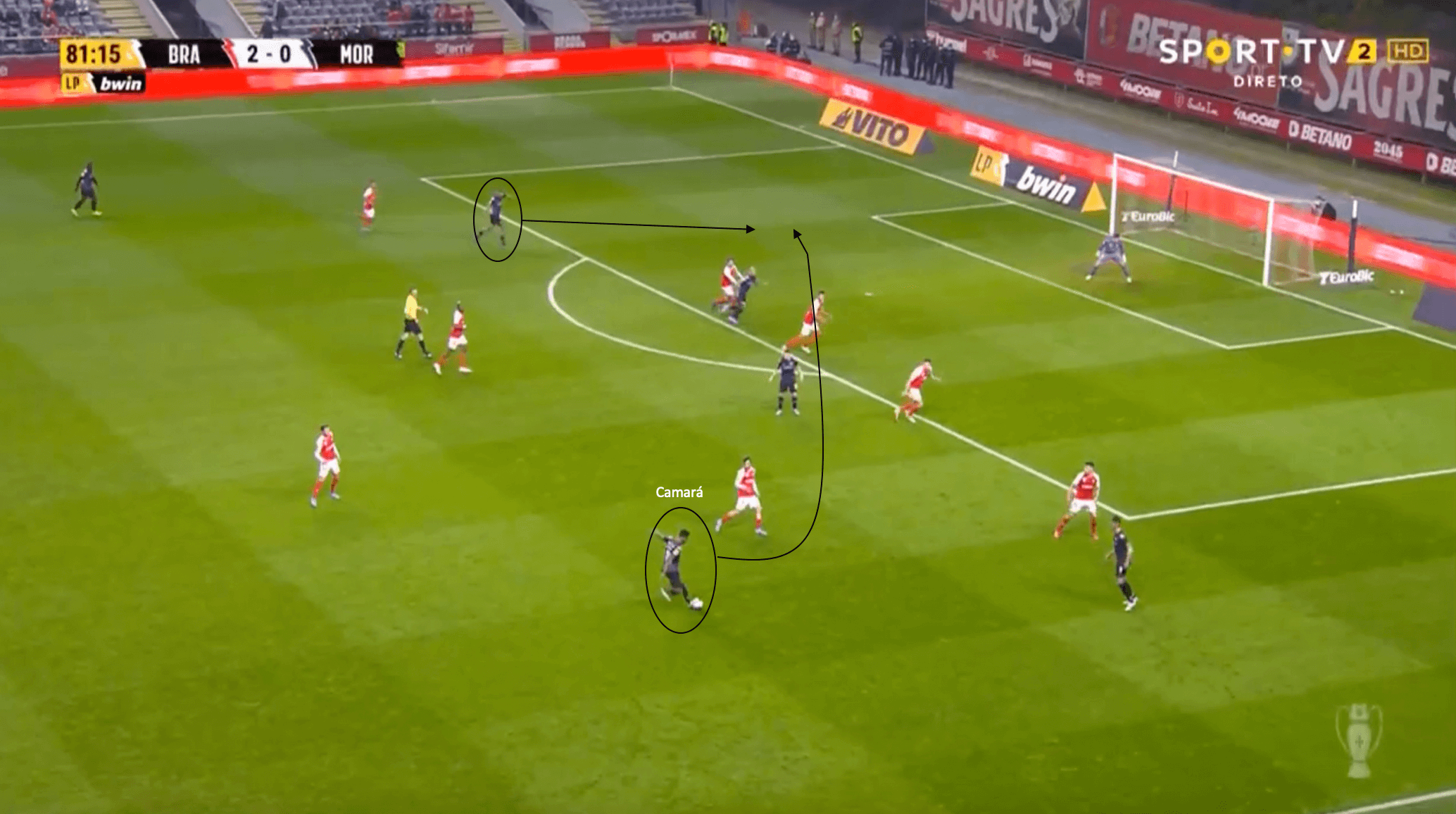
Crossing from more inside positions is also a passing trait that Camará will sometimes utilise depending on the situation. In this Moreirense attacking phase of play above against Braga, a crossing scenario emerged. Operating in an inside position, Camará was able to use his vision to spot the unmarked winger making a run into the far post area. Camará is able to play a perfect cross into the winger’s path, which allows him to shoot first time. Unfortunately, the first time shot is fired wide, but that doesn’t take away from the excellent delivery by Camará.
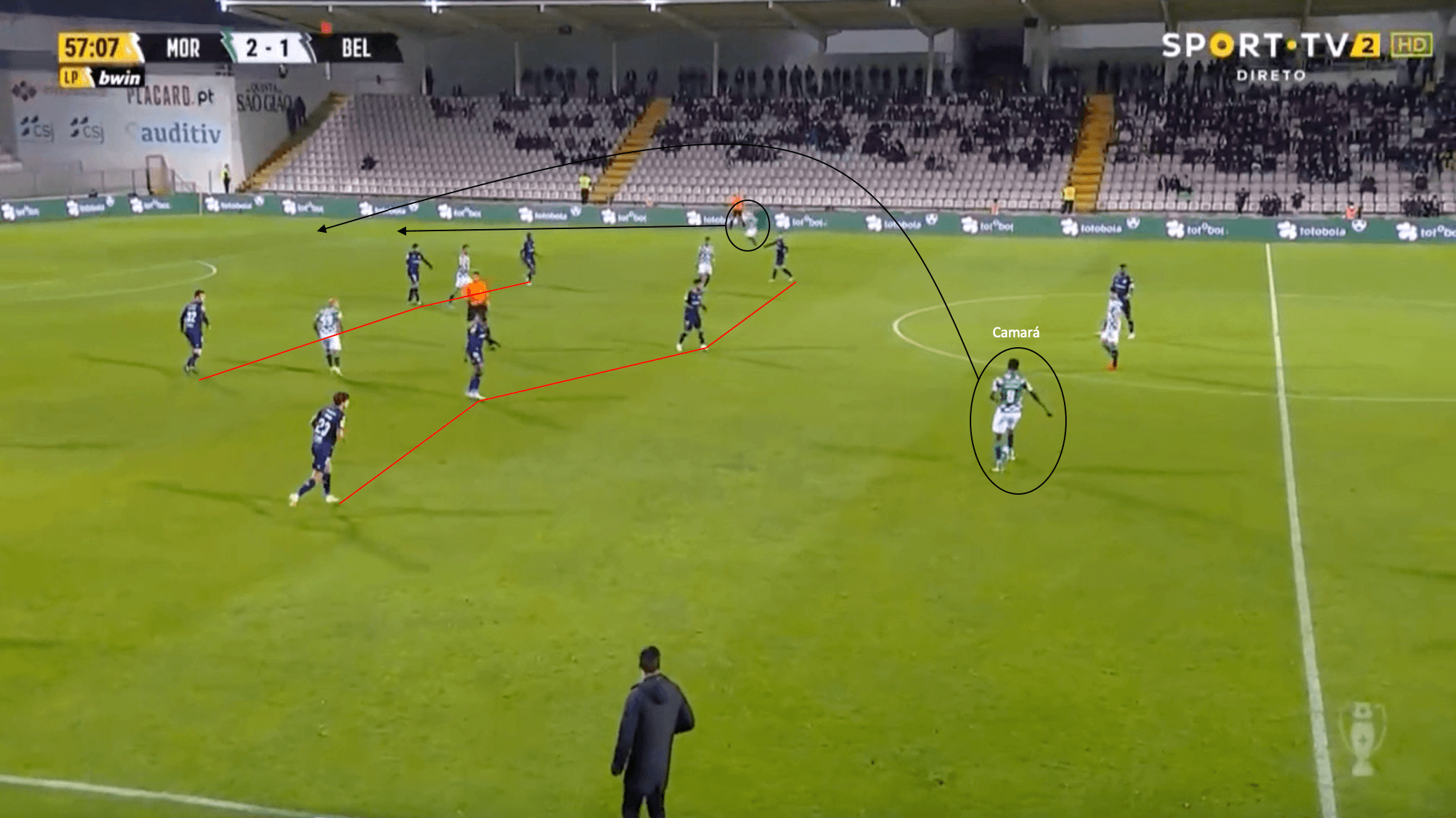
The last example for this section demonstrates the ability of Camará to easily bypass opposition lines using his long passing ability. In the image above, the opposition are sitting in a low block, making it hard for the ball to be played on the ground centrally. The Moreirense fullback on the far touchline is able to make a run behind the opposition defence, which Camará is able to spot. As a result, Camará is able to play a ball over the top to the far touchline and into the path of the fullback; instantly bypassing the opposition’s low block, and putting Moreirense into a good goal scoring position.
Ibrahima Camará’s range of passing is by far the biggest strength in his game, and if this proposed move to Club Brugge goes through, he should excel in their midfield. With Club being arguably the strongest side in Belgium, they often go up against sides who sit in low blocks and force them to play the ball long. With a player like Camará in their midfield, it will force sides to possibly be more open when defending against them; with the threat of him instantly bypassing low blocks with balls over the top a real concern for opposition sides.
Aerial presence
Another strength for Ibrahima Camará is his presence aerially, with the 6’3” tall midfielder being hard to beat in aerial duels. Throughout his time in Portugal with Moreirense, Camará is averaging 3.21 aerial duels per 90 with a success rate of 54.3%. This section will look at his aerial presence in more detail.
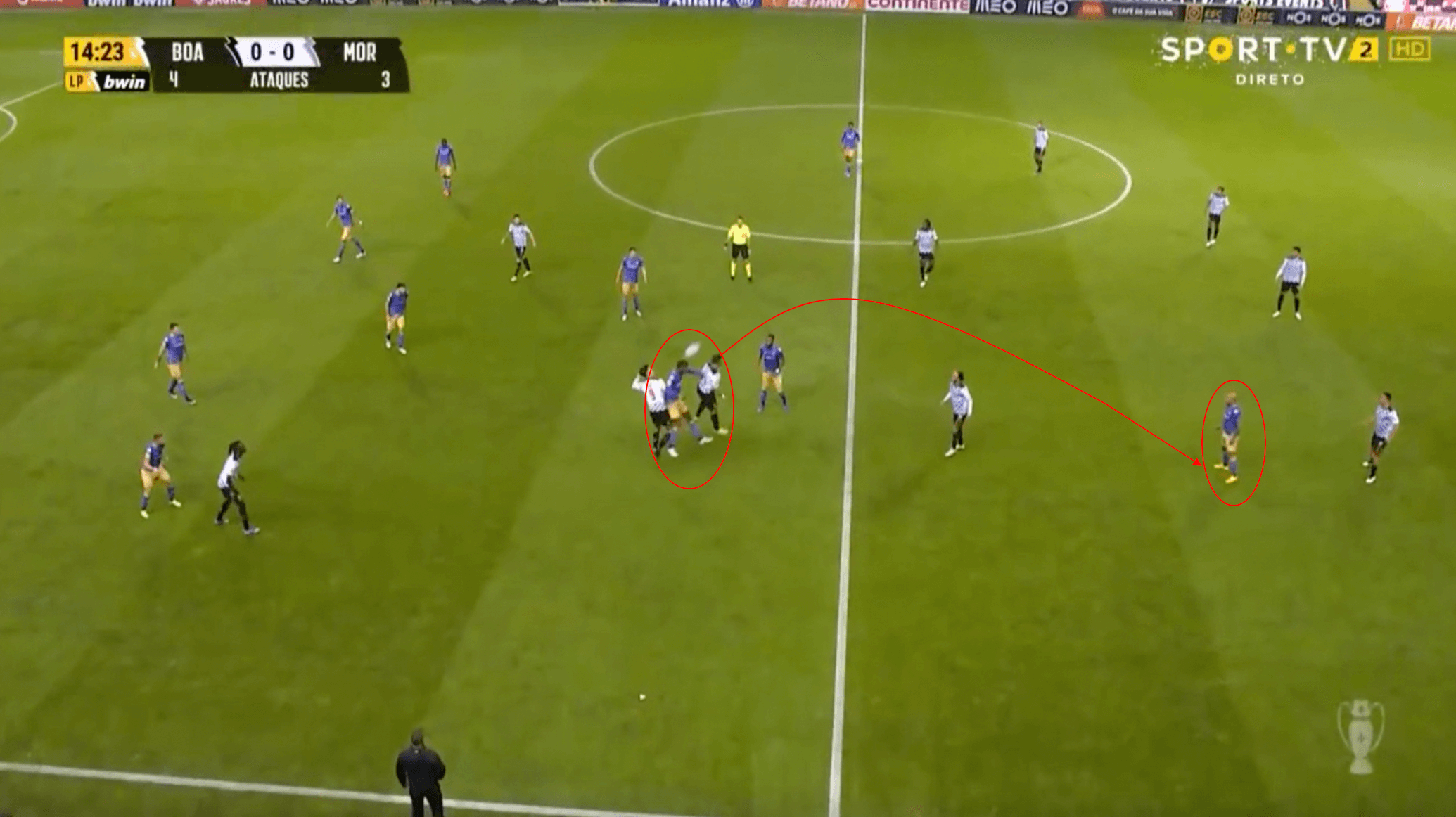
Due to Camará’s normally superior height over opposition midfielders, he commonly wins aerial duels on goal kicks. This image above is from an opposition goal kick that is sent towards where Camará is positioned in the midfield. Even though he is in between two opposition players, he is able to outjump both of them to win the first ball. He then heads the ball into the feet of his forward, allowing Moreirense to engage in an attacking phase of play from an opposition goal kick.
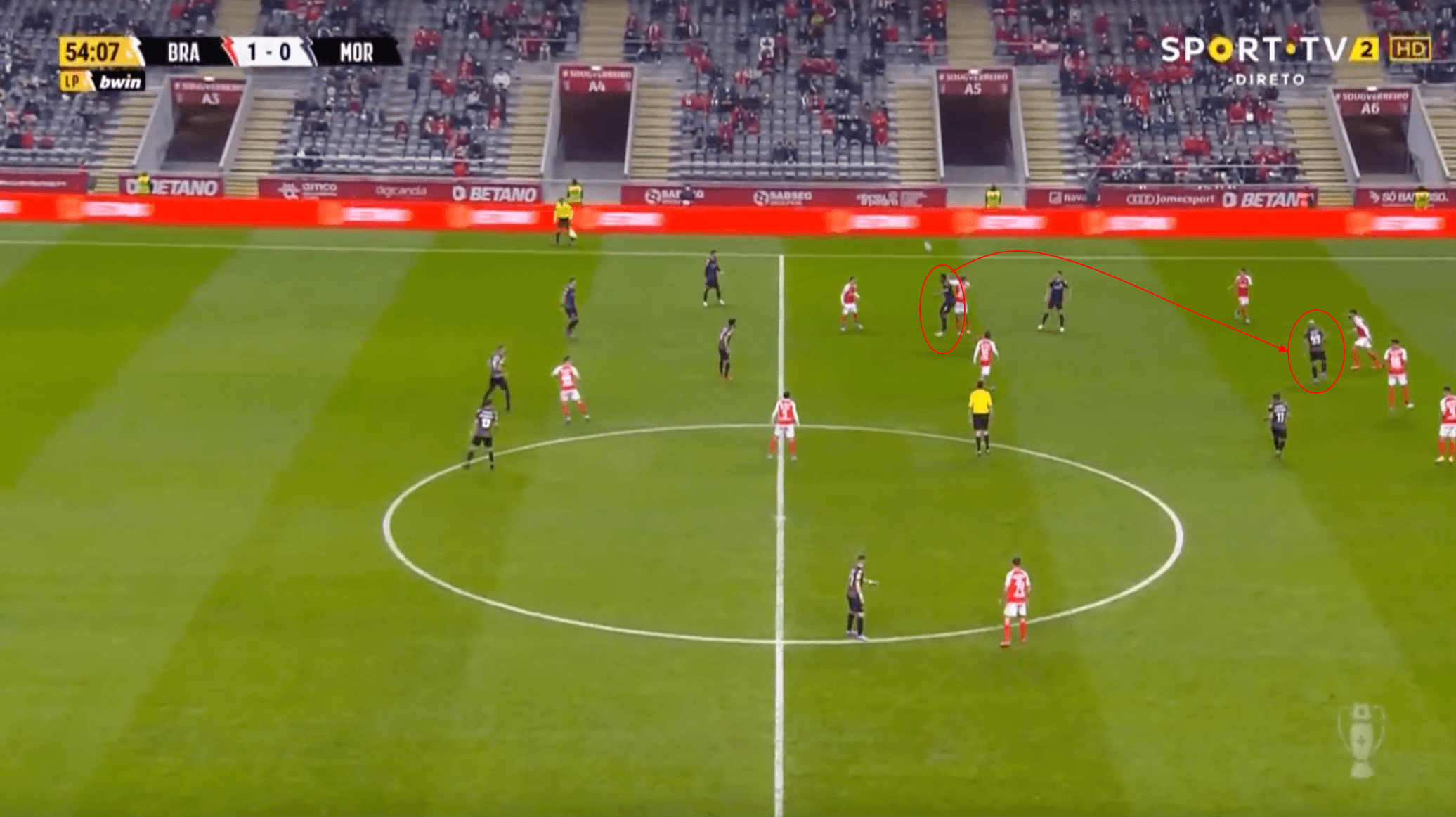
The image above shows a similar situation of Ibrahima Camará’s strength aerially on goal kicks. This time, the Moreirense goalkeeper is kicking it long looking for Camará. He is able to position his body to shield the opponent off which allows him to jump highest to win the header, flicking the ball on to the forward who is able to win the second ball and attempt to start an attacking sequence for Moreirense.
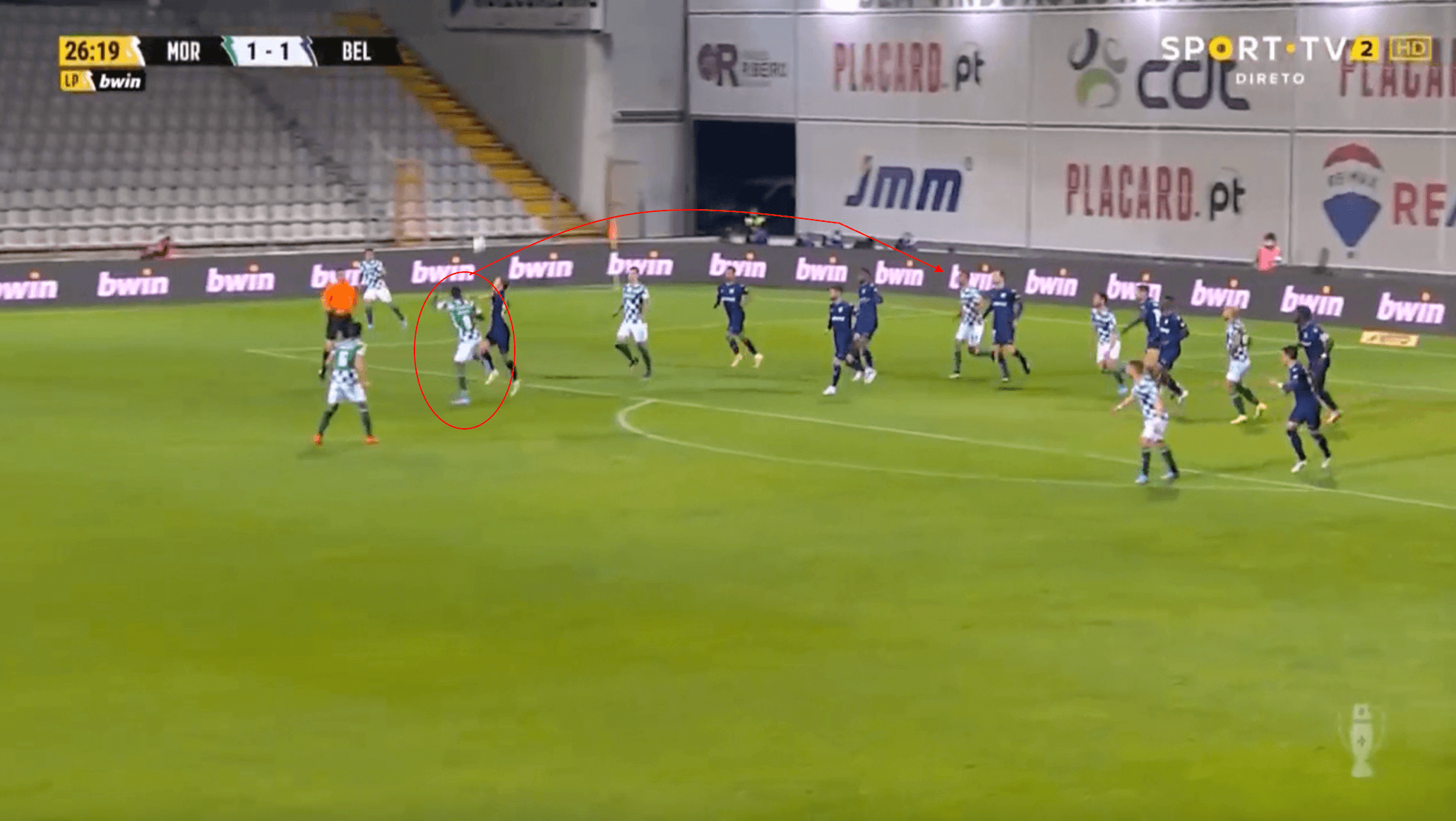
Camará’s aerial ability is also important for Moreirense when it comes to attacking set-pieces. The image above is from an attacking corner from Moreirense. The initial ball in is cleared out of danger by the opposition, but the ball comes towards Camará on the edge of the box, who proceeds to win the header under pressure and send it back into the danger area. This ensuing ball back in does allow Moreirense another chance to score, but unfortunately, the ball is eventually cleared away.
Height is not something that is lacking in the Club Brugge midfield, with Hans Vanaken being 6’4” tall and AC Milan and Manchester City target Charles de Ketelaere being 6’3” tall. With Camará also being 6’3”, if his move to Club Brugge goes through as expected, it will be hard for opposition sides to win the ball in the air against that possible midfield next season.
Off the ball movement
When it comes to Club Brugge during the second half of the season under Alfred Schreuder, his tactics involve a lot of positional play as well as movements being constantly made by the midfielders. Ibrahima Camará is very good when it comes to his off the ball movement, so he should be a perfect fit under Schreuder if he is still at the club next season. This final section will take a look at this in more detail.
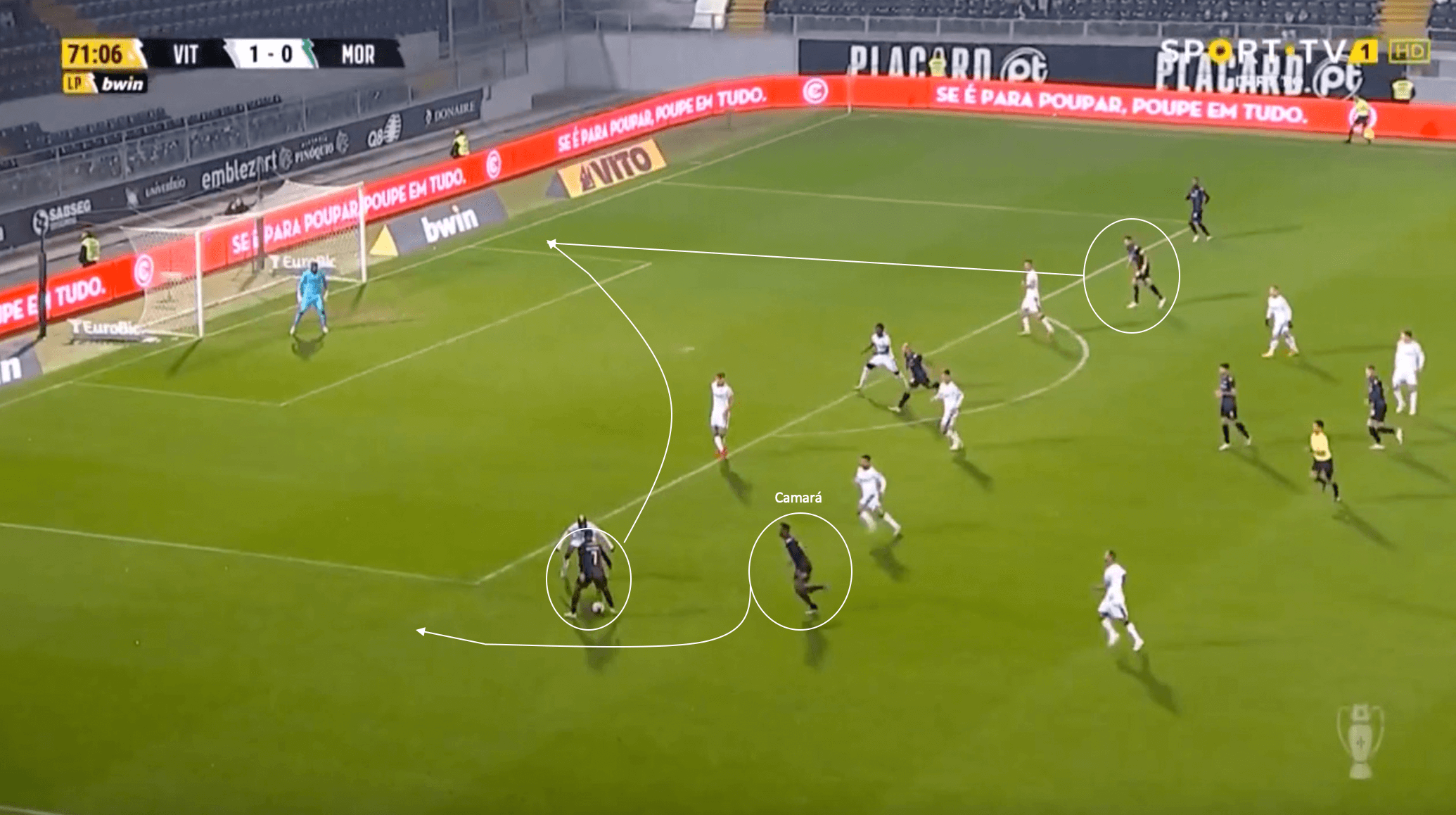
The image above shows an example of an off the ball run that Camará makes to create space for his teammate on the ball. In this attacking phase of play for Moreirense, Camará makes an overlapping run past the player in possession. This run attracts the attention of the opposition fullback, which allows a cross to get sent in towards the back post. A run is made by an attacker, but unfortunately, the ensuing ball is shot wide. However, this chance was created by the movement of Camará, which allowed the space for the cross to initially get sent into the box.
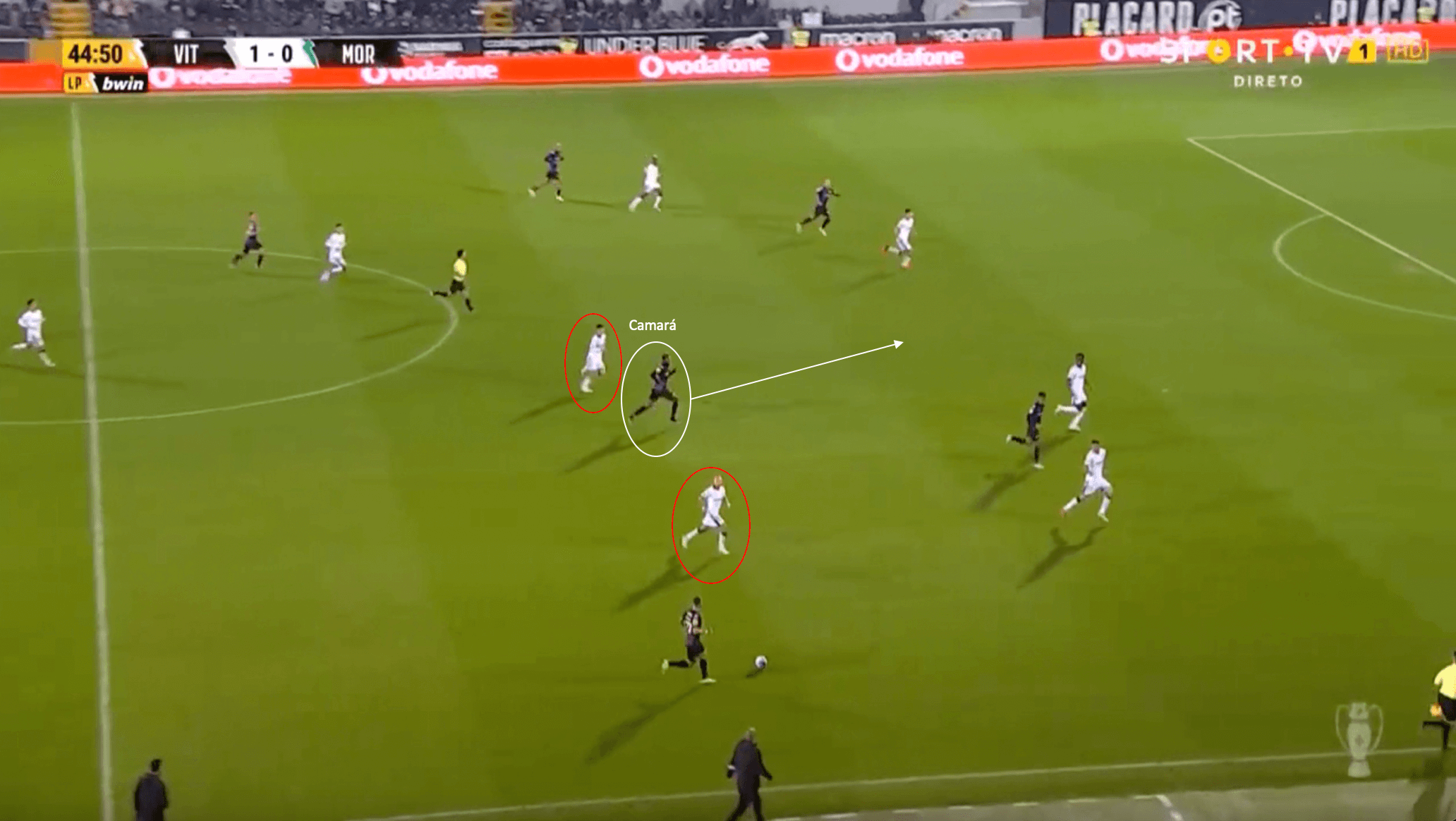
The image above shows another example of Ibrahima Camará’s ability to notice and drive into the vacant spaces to show for a passing option. In this counter-attacking phase by Moreirense, the forwards are pinning the opposition defensive line back, which opens up the space between the opposition’s midfield and defensive lines. Camará is able to recognise this and make a line breaking run. Unfortunately, the wide player in possession continues to drive forward instead of playing the pass to Camará in space; which results in him eventually being dispossessed by an opposition defender. Though the pass was not played to him, Camará was able to become a passing option to ease pressure as a result of this intelligent off the ball movement.
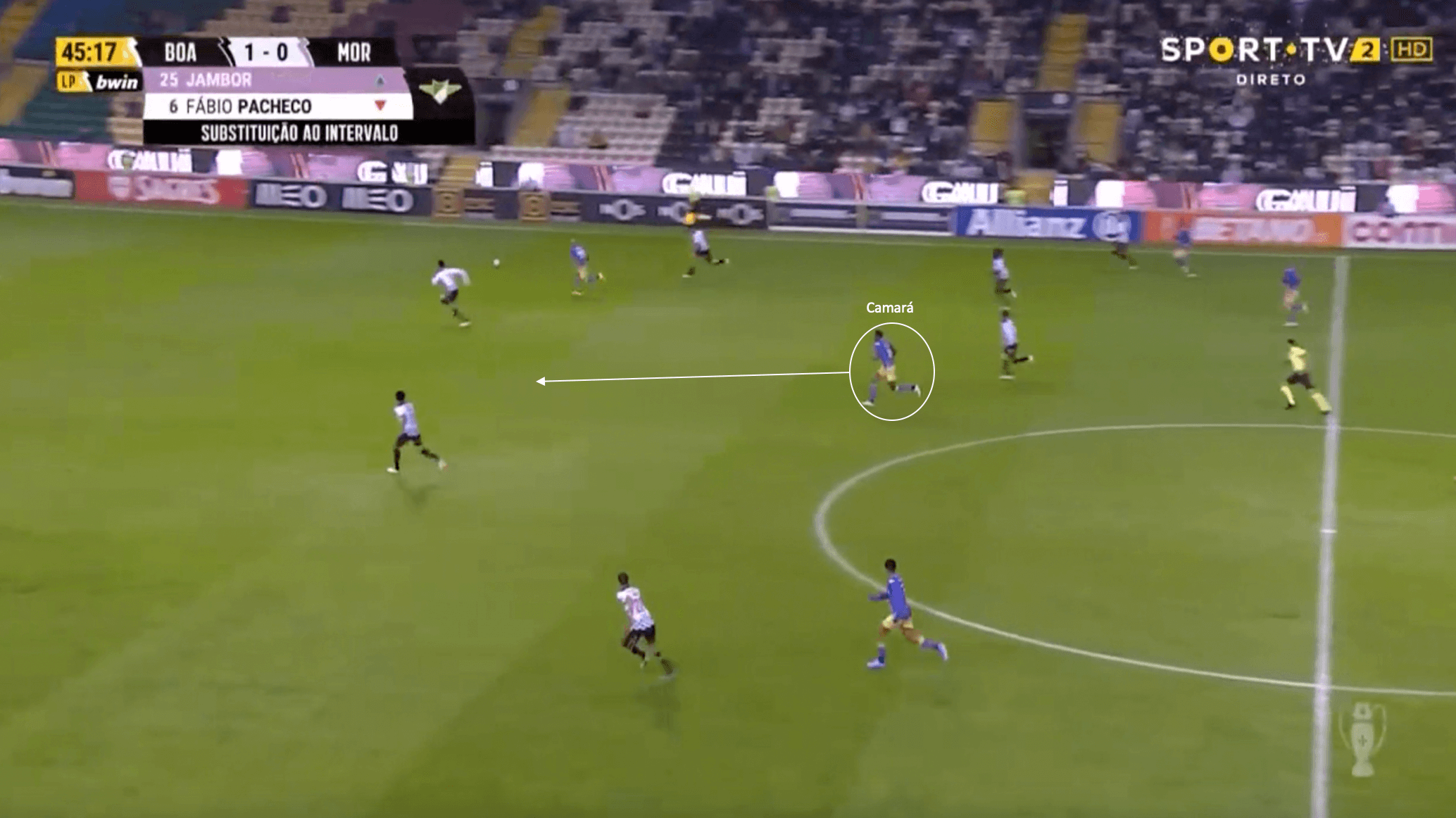
The last example for this final section shows a similar type of movement as the previous example. Camará once again makes a line breaking run into the vacant space, but this run continues all the way into the opposition’s 18-yard box. Unfortunately, the wide player plays a poor ball behind the box, with possession getting turned over. Though nothing noteworthy resulted, it still demonstrated the ability of Camará to notice the space and make runs forward into it, becoming a passing option as a result.
Conclusion
This tactics and analysis piece has gone over some strengths that are present in Ibrahima Camará’s game. If/when this rumoured transfer to Club Brugge goes through, it looks as if it will be money well spent for the current Belgian champions. Though nothing is certain yet on the future of their manager Alfred Schreuder, the addition of Ibrahima Camará to their midfield will make the side even stronger, and give them more options for next season and beyond.



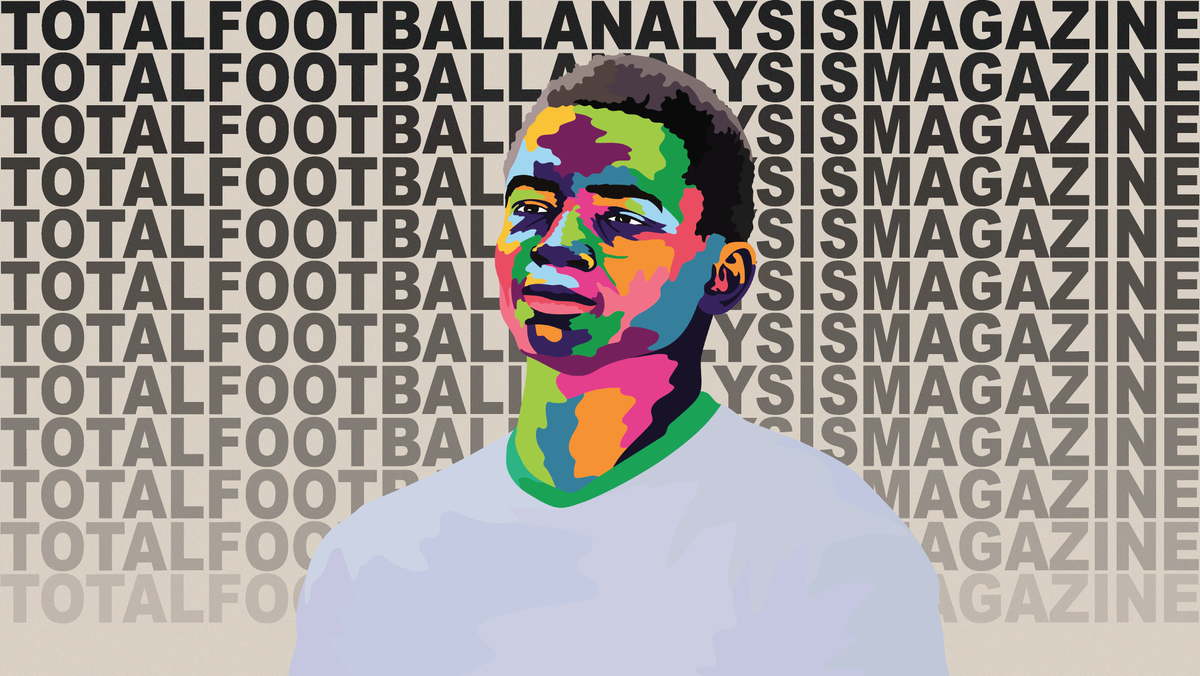

Comments